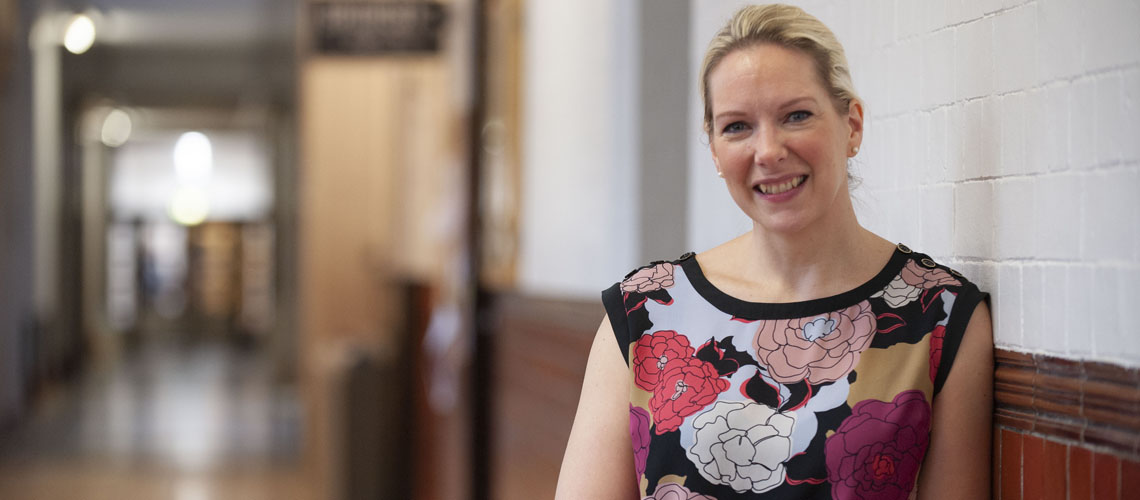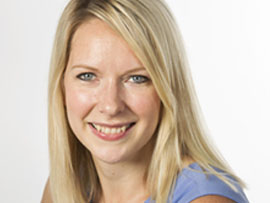A meeting of giants
A collaboration involving cancer and advanced materials, two of The University of Manchester's research giants, is taking shape in the new £3 million Manchester/MCRC Early Recognition of Cancer and Detection Options (MERCADO) programme to make huge advances in the earlier detection of cancer. MERCADO lead supervisor Professor Sarah Cartmell discusses the implications of the new programme.

We're aiming to develop a personalised early detection strategy for breast and lung cancers.
One of the keys to this is identifying people at high risk of these cancers. We can then start to understand the key drivers of tumour initiation that contribute to increased risk and, ultimately, detect these cancers much earlier and therefore improve patient outcomes.
For this to be successful, we need to understand the changes in signalling and gene expression at the very start of lung tumour development. This is a promising way of identifying new bio-markers, which we can then use to develop new tests to diagnose cancer.
If we use this approach, then we need tumour samples from these patients so we can fully analyse their phenotype and genetic profile, in comparison to cancerous cells that have developed in the patient with no genetic predisposition.
In other words, we need to work with cancer tissues with a genetic component to their formation to facilitate the development of treatments targeting the genetic causes behind the tumours. It is here where tissue engineering technologies can offer the integration of components of the tumour microenvironment which can assist in modelling, in vitro, the disease progression.
By collaborating with industry, academic and clinical colleagues, we will establish three-dimensional (3D) lung carcinoma models which will allow us to look at tumours at their earliest point of development.
The benefit of this is that we can control the environment to see exactly what happens at the point of tumour creation, then we can develop tests to detect the very earliest signs of cancer.

Professor Sarah Cartmell
Sarah Cartmell is Professor of Bioengineering and Head of the Department of Materials in the Faculty of Science and Engineering, The University of Manchester.
Building blocks
When we're trying to grow 3D tissue, we need a scaffold. We need a new biomaterial that is appropriate for whatever tissue we're trying to grow.
For example, with a tissue such as a tendon, we need something that's parallel and aligned and fibrous, whereas for cartilage, we need a scaffold such as a hydrogel that can encapsulate cells and keep them rounded.
In cancer research, we can essentially use the same techniques, but for a different application, for example, you might want to create a cancerous mimic and then test if your therapy is appropriate. We can use human cells, because we do that with tissue engineering rather than using animal cells.
There are different models that researchers use in a mouse, but there are sometimes difficulties translating this research into a human due to our different pathologies. We bring to the mix 3D human structures that enable us to perform multiple imaging and testing in the laboratory, something that you wouldn't ethically be able to do in animals.
The idea is that certain people are more predisposed to lung cancer than others, so if we can understand more about the underlying mechanisms, we can potentially develop or identify new biomarkers before these patients they show symptoms.
This insight could also support the development of new therapies, as we could test them in our models, and we could source cells from people who are more predisposed to developing lung cancer than others.
Benefits of combining cancer and advanced materials
For me, the innovation would be controlling the environment, then designing tissue mock-ups of predisposed versus healthy cancerous tissue. Then we can use some of the techniques that we have in the Faculty of Science and Engineering that some of the cancer team wouldn't usually have access to or awareness of, such as the fantastic imaging capability.
By bringing the two disciplines together, we can share the latest developments in each other's spheres and explore how they can progress knowledge on both sides. If one of our cancer colleagues updates us on their research, we are then able to discuss new analytical methods that could be used.
For example, we could image at a sample in 3D with our CT imaging, but without having these discussions, it is possible that our colleagues may not be aware of our current capability. While people are familiar with computed tomography, often people think that the resolution is around about 1mm, but that's just not true.
Our resolution capability is 50 nanometres with some samples, which is approximately 1/1000th of the width of a strand of hair, meaning that we could label up specific new biomarkers, perhaps using gold nanoparticles, and track their position in cells using this technique.
Making a contribution
Biomaterials and tissue engineering are still relatively new chapters in cancer research's history, but we're at the stage where we can build on this critical mass of understanding.
Tissue engineering uses a scaffold to grow tissue in 3D, which is ideal as cells in monolayer only gives you so much information. Potentially high throughput 3D tissue will let us test and assess, and the ability to do this with human cells gives us the kind of research power that hasn't existed before.
We can help escalate research, reduce risk and obtain information that currently isn't available. If the research is performed at higher throughput, then we are speeding the process up and making it much quicker, so we are able to test more and get the right information. Using human cells also makes the research more clinically relevant.
With human cells, greater understanding about the mechanisms means that you can develop new treatments. It's concerned with finding out new information, escalating it and developing new innovations.
It's not just about the material itself, but if we had a particular assessment technique, whether spectroscopy or an imaging technique, we might be able to find out more about what's happening with the biological mechanism to give new treatments.
The right place
Manchester is the right place to lead this bioengineering revolution. For me, it's because of our size giving us breadth and depth, and because everything is right here on our doorstep.
We're the biggest single-site university in the UK with our own research giants, including cancer and graphene, which we've got the potential of incorporating into our scaffolds. We've also got the MCRC and the Christie. These are all USPs in themselves, but together, they're incredible.
This is the first time that the MCRC has received a grant of this size uniting researchers from across advanced materials and cancer, or had a leader who has brought it all together. It's a really exciting time to be in Manchester.
Learn more about the University's research into cancer and advanced materials.
